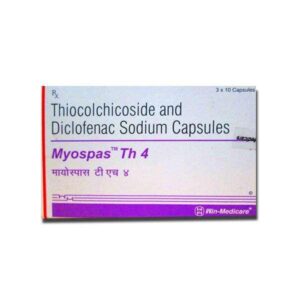PARACETAMOL (ACETAMENOPHEN) + CHLORZOXAZONE
Paracetamol (acetamenophen): Paracetamol, also known as acetaminophen, is a medication used primarily for pain relief and reducing fever. It is classified as an analgesic and antipyretic drug. Here is some information about its use, mechanism of action, dose, and side effects:
Use:
Paracetamol is commonly used to alleviate mild to moderate pain, such as headaches, toothaches, muscle aches, and menstrual cramps. It is also effective in reducing fever associated with flu and cold symptoms.
Mechanism of Action:
The exact mechanism of action of paracetamol is not fully understood. It is believed to work by inhibiting the production of certain chemicals (prostaglandins) in the brain that are responsible for transmitting pain signals and regulating body temperature.
Dose:
The recommended dosage of paracetamol varies depending on the age and weight of the individual. For adults, the usual dose is 500 to 1000 mg every 4-6 hours, with a maximum daily dose of 4000 mg. It is important to follow the dosage instructions provided by the healthcare professional or mentioned on the packaging.
Side Effects:
When taken at the recommended doses, paracetamol is generally safe and well-tolerated by most individuals. However, it can cause rare but serious side effects if taken in excessive amounts. Some common side effects include:
1. Liver toxicity: Taking high doses of paracetamol or using it for an extended period may cause liver damage. Individuals with liver problems or those who consume alcohol should exercise caution and consult a healthcare professional.
2. Allergic reactions: Some individuals may experience allergic reactions to paracetamol, characterized by skin rash, itching, swelling, or difficulty breathing. Seek medical attention immediately if any signs of an allergic reaction occur.
3. Nausea and vomiting: Paracetamol can sometimes cause gastrointestinal issues like nausea and vomiting, especially when taken on an empty stomach.
4. Low blood pressure: In rare cases, paracetamol can cause a decrease in blood pressure, leading to symptoms like lightheadedness and dizziness.
5. Blood disorders: Prolonged use of high doses of paracetamol can occasionally lead to blood disorders such as thrombocytopenia or anemia.
It is crucial to follow the recommended dose and duration of treatment to minimize the risk of side effects. If you have any concerns or experience any unusual symptoms, it is advisable to consult a healthcare professional.
Chlorzoxazone: Chlorzoxazone is a muscle relaxant drug that is primarily used to relieve discomfort and stiffness associated with musculoskeletal conditions such as muscle spasms, strains, and sprains. It is usually prescribed as part of a comprehensive treatment plan that includes rest, physical therapy, and other measures.
The exact mechanism of action of chlorzoxazone is not fully understood. However, it is believed to work by depressing the central nervous system, specifically the spinal cord, thereby reducing muscle spasms and promoting muscle relaxation.
Chlorzoxazone is typically taken orally, with the usual recommended adult dose ranging from 500mg to 750mg, three to four times daily. The actual dose may vary depending on the individual’s condition, response to treatment, and the prescribing doctor’s instructions.
Like any medication, chlorzoxazone may have side effects. Common side effects include drowsiness, dizziness, headache, upset stomach, nausea, and vomiting. More serious side effects are rare, but they may include allergic reactions, yellowing of the eyes or skin, unusual bleeding or bruising, and signs of liver dysfunction. It is important to seek immediate medical attention if these serious side effects occur.
Some precautions must be taken while using chlorzoxazone. It is not recommended for individuals with a history of liver disease, as it can potentially worsen liver function. It may also interact with other medications, such as sedatives and alcohol, resulting in increased drowsiness and central nervous system depression.
In summary, chlorzoxazone is a muscle relaxant used to relieve muscle discomfort and stiffness associated with musculoskeletal conditions. Its mechanism of action is thought to involve depressing the central nervous system. The typical dose ranges from 500mg to 750mg, taken three to four times daily. Common side effects include drowsiness, dizziness, and gastrointestinal discomfort. Serious side effects are rare but may include liver dysfunction. Precautions should be taken, especially regarding liver disease and interactions with other medications.

